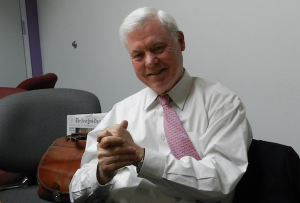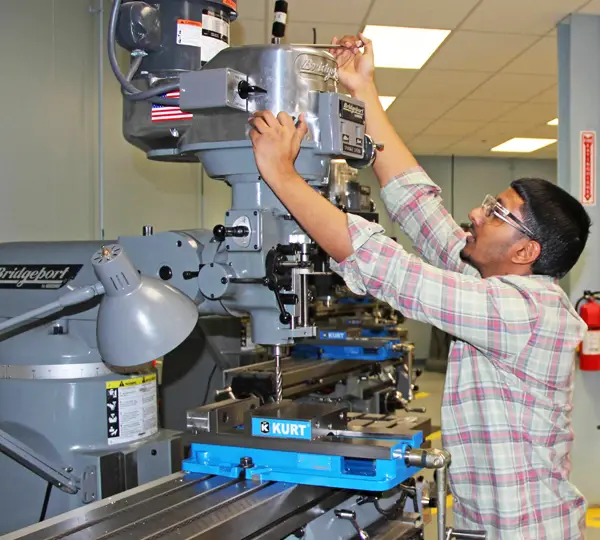There will never again be a Robert Moses, the brash, omnipotent and transcendent architect of modern-day New York; he of the saying, “Those who can, build. Those who can”™t, criticize.”
For better or worse, Moses and his contemporaries laid the foundation for today”™s cities and suburbs. Working around that framework to account for new development and sometimes massive demographic shifts is the monumental task facing today”™s generation of urban planners.
People such as Frank Fish.

Fish, a principal of the New York City design and consulting firm BFJ Planning, has worked on projects spanning Fairfield County and his native Hartford to Westchester County, N.Y., and the Hudson Valley.
He is now confronted with a new challenge: how to manage a surge in residents and in new residential and commercial developments in the city of Stamford.
Stamford, not traditionally thought of as one of Connecticut”™s powerhouse cities, has seen its population surpass that of Hartford, according to Census data released May 23. It boasts the headquarters of four Fortune 500 companies, not to mention the headquarters of NBC Sports and the North American headquarters of UBS A.G. It is the beneficiary of more than 1,000 new housing units and the busiest train station on any of Metro-North Railroad”™s lines.
In essence, “It”™s a different place,” Fish said just prior to the first in a series of meetings aimed at gathering public input on the city”™s urban development strategy.
“I believe that Stamford has got the material to make a great city, and it”™s grown ”“ it”™s grown tremendously,” Fish said. “But it”™s got to manage that growth.”
Stamford”™s original master plan, which was completed in 1929 by a New Yorker by the name of Herbert Swan, described the city as “the metropolitan suburb.”
“And times have changed,” Fish reflected. “It”™s really a full, 24-7 city.”
But not one without its challenges.
Despite its central presence on Metro-North”™s New Haven line, Stamford is plagued by rush-hour traffic.
“Here, as in Westchester, the rail stops created the centers. But the road system made possible much of the post-World War II growth,” Fish said. “If Stamford, for instance, is going to consolidate its position it needs to maintain good regional access. One of the problems now for Stamford is that people can”™t get here ”“ not from New York, ironically, but from inland Connecticut.”
Additionally, despite its reputation as a corporate hub, the city has an office vacancy rate upwards of 26 percent.
Because of technological advances and a younger workforce, offices are changing, Fish said. “A lot of modern offices are using less square footage per person … and suddenly you have a 26 percent vacancy rate in a down economy.”
Ultimately, though, Stamford “has the bones of a great city,” Fish said.
Fish, who has worked on neighborhood revitalization plans and the Riverfront Recapture in Hartford, said he became a planner largely because of the problems he saw while growing up in the state capital.
“When I grew up in Hartford there was no place to go, so I went to school in Boston,” Fish said. “It”™s dead ”“ the place is dead. This is the capital city of Connecticut. The capital city needs what we have here in Stamford ”“ it needs 1,100 more units that (Building & Land Technology) just built, it needs those in downtown Hartford.
“Hartford has great cultural institutions, we”™ve got great buildings and it”™s got great fabric ”“ what it needs is people.”
Stamford has got the homes, the attractions, the restaurants, the office space, the transportation (for the most part) and the people, Fish said. Now all it needs is direction.
“What type of community is it? What”™s the form you want the community to take in the future? I think it”™s important to try to lay out that dialogue with people about how they see their neighborhoods.”
A sometimes-collaborator of Fish”™s and, ironically, one of the people spearheading Hartford”™s drive toward redevelopment, said Fish is uniquely suited to the job.
“There”™s planning on the grand global sense ”“ master planning ”“ and then there”™s planning in the very specific sense ”“ moving a project from point A to point B,” said Michael Freimuth, executive director of the Capitol Region Redevelopment Authority and a former economic development official in Stamford, Bridgeport and New Rochelle, N.Y. “There”™s a micro and a macro, and Frank has been successful in both. …He has a fluency in the economics of a deal to be able to modify plans or at least to educate people about why plans need to be modified, which is critical.”

















